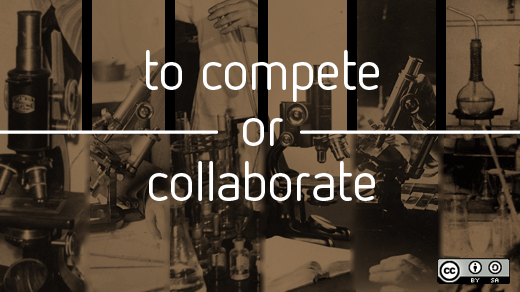Google the word collaboration and you'll find websites that want to sell you collaboration tools, blogs that describe best practices for facilitating collaboration, and self-help sites that want to teach you better collaboration skills.
You'll read over and over again that best practices prescribe bringing together individuals with varied backgrounds. But what you probably won't read is exactly how to bring together rivals or antagonists skillfully. You may be able to find examples or debriefs of this type of collaboration--with some very interesting outcomes.
Recently the Direct Project brought together several dozen competing organizations in order to create "a simple, secure, scalable, standards-based way for participants to send authenticated, encrypted health information directly to trusted recipients over the Internet." This collaboration between otherwise rivals brought the first project to launch in record speed. Perhaps the competitive mentality compelled them to race to a solution.
The U.S. Department of Education also recently brought historically oppositional groups--teachers and unions--together for a national conference to talk about goals for educating our kids and improving the nations schools. In the past, these two groups focused mostly on worker contracts, pay, and structure.
On a higher level, the multinational Synchrotron-light for Experimental Science and Applications in the Middle East (SESAME) is a project under way in Jordan. It is under the auspices of the United Nations Educational, Scientific, and Cultural Organization (UNESCO). This organization brings together Arabs, Israelis, and other scientists from the region to work cooperatively on many simultaneous experiments in fields ranging from biological and medical sciences to archeology. While this project has budgetary benefits, many claim this collaboration is performing double duty as a diplomatic mission.
More and more we are seeing successful collaborations that transcend traditional rivalries. And in most cases, it appears that opening these traditional borders opens minds as well.
And opening minds—encouraging dialogue between competitors—is fertile ground for new ideas. Where else could collaboration between well-established rivalries end in innovation? You tell us—we'd love to hear about organizations or groups that you've seen pull together, even in the face of competitive differences. Where should this sort of thing be happening, even if it's not today?
The possibilities are endless. Discuss.




1 Comment